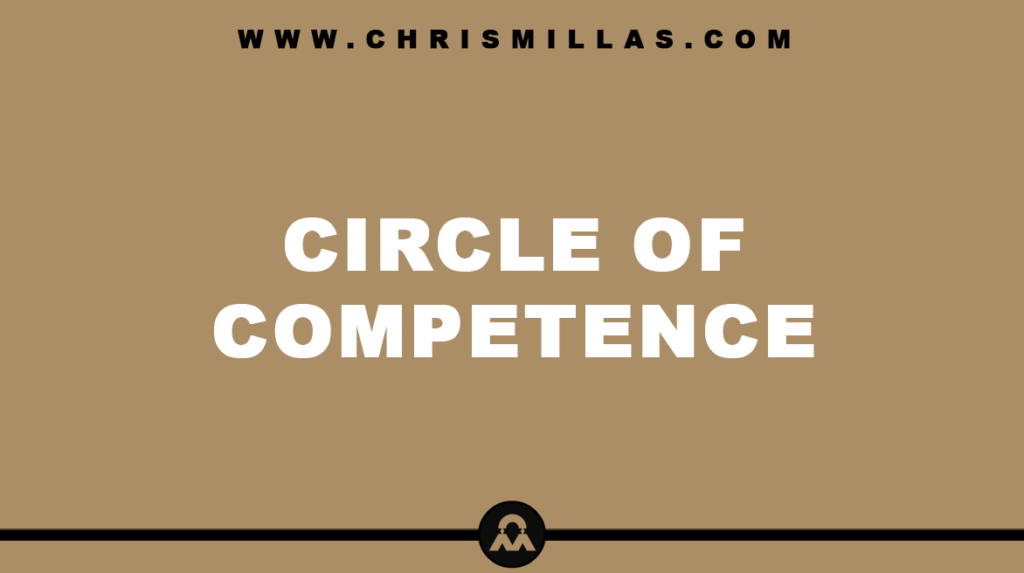In this post, we’ll deep dive into the concept of investing, defining exactly what it is, determining the difference between investing and gambling, lump sum versus cost averaging, time in the market versus timing the market, bull and bear markets and more.
What Is Investing?
Investing is the act of committing recourses to an endeavour in the present with the expectation of receiving some form of benefit in return in the future.
Effective investing is the result of understanding and applying a number of universal principles, that, when applied successfully, maximise returns.
Active Versus Passive Investing
Active investing involves personally managing investment decisions. Active investors believe the market is inefficient and aim to beat a specific market benchmark.
Passive investing involves outsourcing investment decisions. Passive investors believe the market is efficient and aim to match a specific market benchmark.
| Criteria | Active | Passive |
|---|---|---|
| Strategy | Personally Managed | Outsourced |
| Goal | Beat Market Benchmark | Match Market Benchmark |
| Time Commitment | High | Low |
Investing & Knowledge
Knowledge has a direct positive correlation with returns — in other words, the greater your knowledge, the greater your returns are likely to be.
Knowledge has a direct negative correlation with risk — in other words, the greater your knowledge, the lower your risk.
“[the best investors] look for advantages wherever they can find them: economic history, neuroscience, literature, Stoicism, Buddhism, sports, the science of habit formation, meditation, or anything else that can help.” — William Green
Your Role As An Investor
As an investor, your job is to be a good allocator of capital. You must decide where to deploy funds in order to maximise returns and minimise risk.
More simply, you must position capital so as to benefit from future developments.
Efficient capital allocation maximises the growth of wealth over time by ensuring that resources are directed towards the most productive and promising opportunities.
Investors make money by exploiting the gap between price ― what they pay for an asset ― and value ― what the asset is actually worth.
The Markets
Markets are forward-looking discounting mechanisms. Market prices today are determined by what investors think will happen tomorrow and these future predictions are adjusted for The Time Value Of Money.
Risk
Risk can be defined as the probability of permanent capital loss ― the higher the risk, the higher the probability of capital loss.
Signals
Decoding signals is essential in the investing world, whether you’re analysing a company, the market or the economy in general.
The better you can differentiate between honest signals and dishonest signals, the better you can predict outcomes, the better decisions you can make and the better your results will be.
The same way misreading signals in the animal world can lead to the death of an organism is the same way that misreading signals in the investing world can lead to the death of capital.
Narratives
Economic narratives shape investor perceptions and market trends, therefore influencing investment decisions and financial market movements.
Narratives follow the same pattern as the spread of disease; a rising number of infected people who spread the narrative for a while, followed by a period of forgetting and falling interest in talking about the narrative.
In both medical and narrative epidemics, we see the same basic principle at work: the contagion rate must exceed the recovery rate for an epidemic to get started.
The same way that in the epidemiological world certain variants go through cycles of mutating, rising and falling is the same way that in the investing world narratives go through cycles of mutating, rising and falling.
Narrative leads price. Price leads narrative.
Circle Of Competence
Circle Of Competence is a mental model for understanding the degree of an individual’s ability within a specific skill. Within the context of investing, it is essential you stay within your Circle Of Competence in order to ensure you make effective decisions which leads to successful outcomes.
Mental Models
Mental Models are simply frameworks for thinking. They are are essential within investing because they help us process problems and make decisions.
Type 1 Versus Type 2 Errors
Type 1 errors are errors of commission. In other words, acting when you shouldn’t. Type 2 errors are errors of omission. In other words, not acting when you should.
All organisms have evolved to minimize type 1 errors in favour of type 2 errors. Therefore, investors should focus on making less bad investments instead of making more good investments.
Studies show that individuals who aim to make fewer bad investments are often more successful than those who primarily strive to make more good investments.
Convergence
Convergence refers to the phenomena observed in nature whereby unrelated organisms develop the same solutions to similar problems. In other words, every problem has a small number of solutions.
We can extract from this that there are patterns to success and failure. Therefore, in the context of investing, we shouldn’t invest in businesses ― we should invest in successful templates of businesses.
Investing Versus Gambling
Investing is a positive-sum game where all participants can gain value. The economic pie can expand.
Gambling is a zero-sum game where one person’s gain is another person’s loss. The economic pie can’t expand.
Investing Versus Trading
Investing refers to the buying and selling of assets with the expectation of generating a profit over the long-term. Trading refers to the buying and selling of assets with the expectation of generating a profit over the short-term.
Traders get rich. Investors get wealthy.
Lump Sum Investing Versus Cost Averaging Investing
Lump Sum Investing is the strategy of investing maximum amounts of an asset, whenever possible, regardless of the price.
Dollar Cost Averaging is the strategy of investing fixed amounts of an asset, at periodic intervals, regardless of the price.
Research shows that Lump Sum Investing is a more effective strategy for assets that are volatile to the upside. Dollar Cost Averaging is a more effective strategy for volatile but flat assets over time.
Additionally, Lump Sum Investing is a more effective strategy for maximising profits. Dollar Cost Averaging is a more effective strategy for minimising losses.
Time In The Market Versus Timing The Market
Time In The Market is the strategy of buying and holding assets until the original reasons for buying change or a pre-determined goal is achieved. It tends to be a long-term approach where fundamentals matter more than timing.
Timing The Market is the strategy of buying and selling assets based on predictions of when the market is at its lowest dip and highest peak. It tends to be a short-term approach where timing matters more than fundamentals
Studies show that Time In The Market is a more effective and sustainable strategy for the vast majority of non-professional retail investors when compared to Timing The Market. In other words, the longer you are invested, the more you increase your chances of a positive outcome.

“Far more money has been lost by investors preparing for corrections, or trying to anticipate corrections, than has been lost in corrections themselves.” ― Pere Lynch
“The big money is not in the buying and the selling but in the waiting.” ― Charlie Munger
“The stock market is a device for transferring money from the impatient to the patient.” — Warren Buffet
Diversification Versus Concentration
Diversification involves increasing the number of assets in a portfolio which theoretically decreases risk. Concentration involves decreasing the number of assets in a portfolio which theoretically increases risk.
Diversification preserves wealth. Concentration creates wealth.
Bull & Bear Markets
Everything comes in cycles. The same way night follows day and day follows night is the same way bear markets follow bull markets and bull markets follow bear markets.
Not only are economic downturns a normal part of the market cycle, but they are a necessary and healthy part of the market cycle. Economic downturns are a feature not a bug.
The same way forest fires are necessary to clear out the dead wood and provide fertile ground for the strongest and most resilient trees to thrive, is the same way economic downturns are necessary to clear out the dead wood and provide fertile ground for the strongest and most resilient businesses to thrive. In other words, economic downturns are a mechanism that markets use to autocorrect.
Common Characteristics Of Stocks That Prove Successful During Bear Markets
- Defensiveness: Companies that provide essential goods and services.
- Strong Balance Sheets: Companies with minimum debt, large cash holdings and strong cash flows.
- Dividend Yield: Companies that pay dividends.
- Market Leaders: Companies that are leaders in their respective industries or sectors.
- Pricing Power: Companies that have ability to increase prices without decreasing demand.
“Bull markets can make you rich. Bear markets can make you wealthy.”
Return On Capital Employed
Return On Capital Employed (ROCE) is a financial ratio that measures how effectively a business is using its capital to generate profit.
Return On Capital Employed is the single business quality that correlates favourably with many other areas of business excellence. In other words, a business that has maintained a high ROCE in any industry over any length of time is likely to carry with it many other qualities that are relevant for an investor.
Law Of Diffusion Of Innovation
The Law Of Diffusion Of Innovation is a theory developed in 1962 by Everett Rogers. It outlines how innovations are adopted by societies. According to this theory, there are 5 stages of adoption. They are:
- Innovators (2.5%): Explore new ideas and technologies.
- Early Adopters (13.5%): “Opinion Leaders” who like change and may share positive testimonials.
- Early Majority (34%): Read reviews by Early Adopters about new innovations before purchasing.
- Late Majority (34%): “Sceptics” who don’t like change and only adopt so not to be left behind.
- Laggards (16%): “Traditionalists” who adopt new innovations when there are no alternatives.
Any company planning on bringing a new innovative solution to market must accept the fact that not every customer will be willing to buy it immediately.
Round Of Investing
- Pre-seed Funding: From founders, friends or family used to develop a business plan or prototype.
- Seed Funding: From angel investors and crowdfunding sources used to develop a market-ready product.
- Series A: Venture capital used to optimize the business model and expand user base.
- Series B: Used to take the business to market and product expansion.
- Series C: Used for further scaling, such as adding new products, acquiring other businesses or expanding into new markets.
- Series D, E, F etc: From larger investors used for optimization before an IPO or for staying private longer.
- IPO: Company’s shares are sold to institutional and then public investors, transitioning the company from private to public.
Summary (TL;DR)
Investing is the process of allocating recourses to an endeavour with the goal of receiving some form of benefit in return.
Your job as an investor it to be an effective allocator of capital. You achieve this by maximising returns and minimising risks.
The same way floods replenish soil and fires rejuvenate forests, an economic market crash clears out all the exhausted elements and creates an opportunity for fresh growth.







